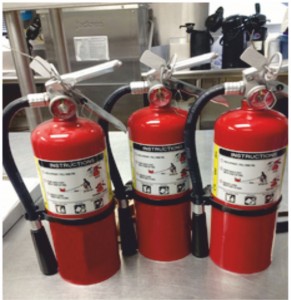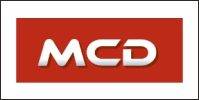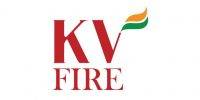The Fire Extinguisher must be appropriate for the type of fire being fought. Multipurpose fire extinguishers, labeled ABC, may be used on all three classes of fire. If you use the wrong type of extinguisher, you can endanger yourself and make the fire worse. It is also very dangerous to use water or an extinguisher labeled only for Class A fires on a cooking-grease or electrical fire.
Depending on their intended use, portable extinguishers store specific "extinguishing agents," which are expelled onto the fire.
The Types of Fire Extinguishers include:
 PRESSURIZED WATER MODELS – are appropriate for use on Class A fires only. These must never be used on electrical or flammable-liquid fires.
PRESSURIZED WATER MODELS – are appropriate for use on Class A fires only. These must never be used on electrical or flammable-liquid fires.
CARBON DIOXIDE – extinguishers contain pressurized liquid carbon dioxide, which turns to a gas when expelled. These models are rated for use on Class B and C fires, but can be used on a Class A fire. Carbon dioxide does not leave a residue.
DRY CHEMICAL – extinguishers are either stored-pressure models or cartridge-operated models. The stored-pressure models have a lever above the handle for operation. The cartridge-operated models require two steps: Depress the cartridge lever, and then squeeze the nozzle at the end of the hose. The dry chemicals leave a residue that must be cleaned up after use.
AMMONIUM PHOSPHATE - dry chemical can be used on Class A, B, and C fires, but should never be used on a fire in a commercial grease fryer because of the possibility of reflash and because it will render the fryer's automatic fire-protection system less effective.
SODIUM BICARBONATE – dry chemical, suitable for fighting Class B and C fires, is preferred over other dry-chemical extinguishers for fighting grease fires. Where provided, always use the extinguishing system first. This also shuts off the heat to the appliance.
POTASSIUM BICARBONATE, UREA-BASE POTASSIUM BICARBONATE,& POTASSIUM CHLORIDE – dry chemical are more effective and use less agent than sodium bicarbonate on the same fire.
FOAM (or AFFF & FFFP) EXTINGUISHERS – coat the surface of a burning flammable liquid with a chemical foam. When using a foam extinguisher, blanket the entire surface of the liquid to exclude the air.
FIGHTING SMALL FIRES ON THE JOB
 Fire extinguishers in the workplace should be placed conspicuously and within easy reach so they can be accessed quickly while a fire is still small.
Fire extinguishers in the workplace should be placed conspicuously and within easy reach so they can be accessed quickly while a fire is still small.
Federal regulations require that employers who provide portable fire extinguishers in the workplace also provide training for their use. Used properly, portable fire extinguishers can save lives and property by putting out a small fire in the workplace or containing one until the fire department arrives.
It is essential that all employees be familiar with the proper use of portable extinguishers and know when and when not to use them. In the event of a fire, employees should respond in accordance with their company's fire-emergency plan. Most employees will evacuate. Certain trained and designated employees will evaluate the fire scene and, if the fire is small and conditions are reasonably safe, use a fire extinguisher to fight the fire. If the fire is large or conditions are unsafe, all employees will evacuate.
FIRE EXTINGUISHERS HAVE THEIR LIMITS
Portable extinguishers are not designed to fight large or spreading fires. Even against small fires, they are useful only under certain conditions:
- The operator must know how to use the extinguisher.
- The extinguisher must be within easy reach, in working order, and fully charged.
- The operator must have a clear escape route that will not be blocked by fire.
- The extinguisher must match the type of fire being fought.(Extinguishers containing water are unsuitable for use on grease or electrical fires.)
- The extinguisher must be large enough to put out the fire. Manyportable extinguishers discharge completely in as few as eight to ten seconds.
- !! Always be sure the fire department inspects the fire site, even if you think you've extinguished the fire
HOW DO MULTI-CLASS DRY CHEMICAL FIRE EXTINGUISHERS WORK?
If you ask any firefighter what it takes to create a fire, you will learn that you have to have three things:
1. Fuel – some sort of combustible solid, liquid or gas
2. Oxygen – to react with the fuel
3. Heat – there must be enough heat to get the fuel above its flash point. There is paper on your desk right now that is surrounded by oxygen. It does not burn unless you get the paper hot enough.
If you want to put out a fire, you need to remove one of the three elements. When you watch firefighters battling a forest fire, they generally try to remove fuel or heat. Either they pour water on the fire to reduce the temperature, or they try to bulldoze strips of bare earth to eliminate the fuel.
A carbon dioxide fire extinguisher works by eliminating oxygen and replacing it with carbon dioxide. You could do the same thing with just about any non-oxidizing gas (nitrogen, for example), but carbon dioxide is inexpensive and easy to store.
Another way to cut off oxygen is to throw a blanket over the fire. Covering the fire with dirt or sand does the same thing. You might have heard that you can put out a kitchen fire by throwing baking soda or salt on the fire. Throwing sand would do the same thing, but most people have more salt in their kitchens than they have sand.
Dry chemical fire extinguishers are by far the most common fire extinguishers in the home. They can handle all three types of fires you would find in a kitchen or workshop: combustible solids like wood or paper, combustible liquids like gasoline or grease, and electrical fires. The idea behind a dry chemical fire extinguisher is to blanket the fuel with an inert solid (similar to dirt or sand). A dry chemical extinguisher sprays a very fine power of sodium bicarbonate (normal baking soda), potassium bicarbonate (nearly identical to baking soda), or mono-ammonium phosphate. These solids coat the fuel and smother the fire.




















































